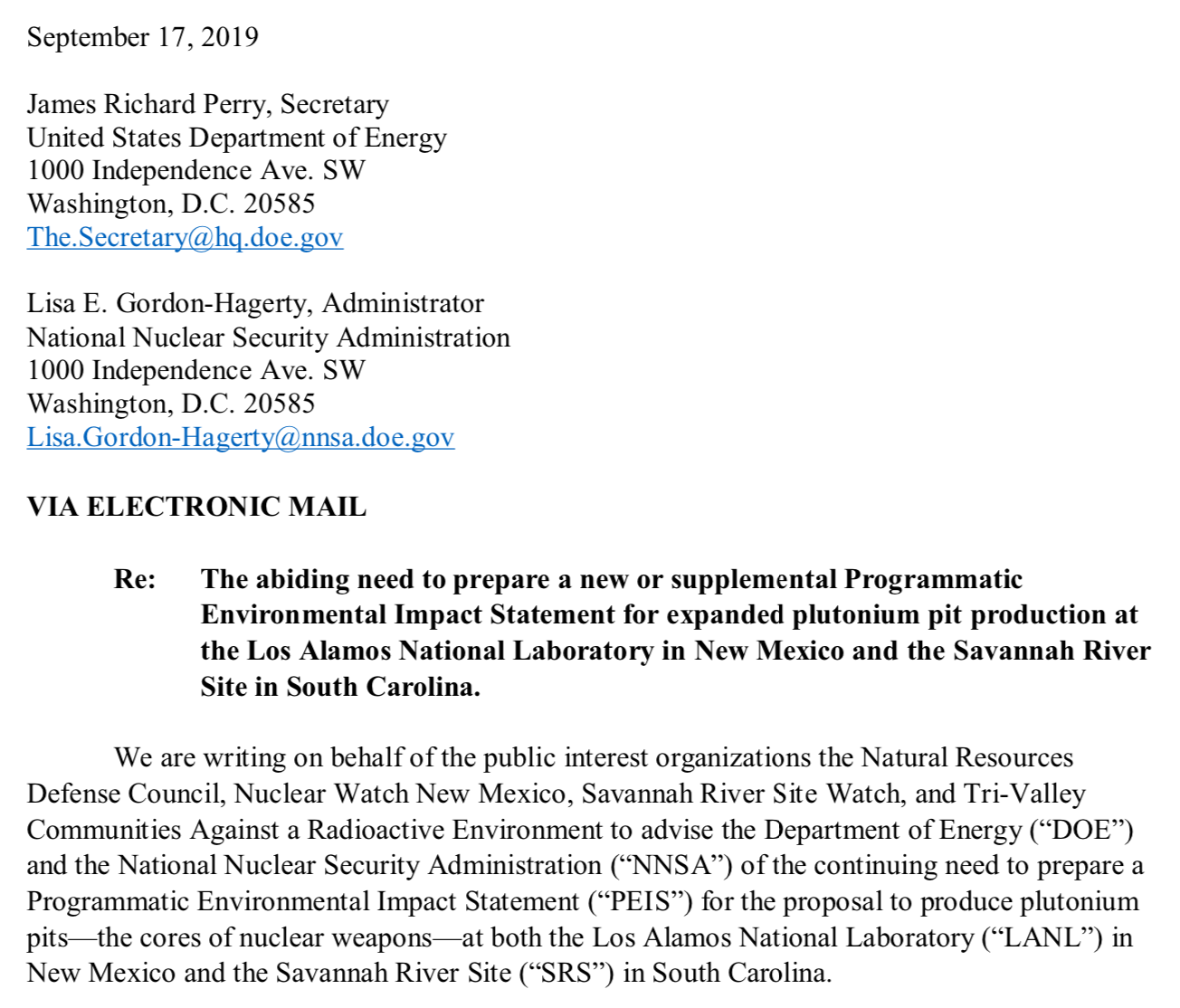2023 News Articles – All Posts
Nothing Found
It seems we can’t find what you’re looking for. Perhaps searching can help.
2022 Select Highlighted Press Items
Nuclear Modernization is the ’Absolute Minimum,’ STRATCOM Commander Says | March 8, 2022
US tested hypersonic missile in mid-March but kept it quiet to avoid escalating tensions with Russia | April 4, 2022
Putin’s Nuclear Threats Are a Wake-Up Call for the World | March 15, 2022
Intelligence report determines that Russia's WMD threats will grow as losses mount in Ukraine | March 19, 2022
China and the United States: It’s a Cold War, but don’t panic | March 10, 2022
Russian military doctrine calls a limited nuclear strike “de-escalation.” Here’s why. | March 8, 2022
North Korea says it will strike with nuclear weapons if South attacks | April 4, 2022
Flying Under The Radar: A Missile Accident in South Asia | April 4, 2022
2022 News Articles
Sens. Warren, Sanders, Markey call on defense leaders to chill pit production push
Two Democratic presidential candidates believe there is no reason to produce 80 plutonium pits per year, as is planned, and have urged congressional defense leaders to step back and reconsider related legislation, according to a missive reviewed recently by the Aiken Standard.
September 23, 2019 | BY COLIN DEMAREST | aikenstandard.com
In a Sept. 13 letter, U.S. Sens. Bernie Sanders of Vermont and Elizabeth Warren and Ed Markey of Massachusetts described a significantly bolstered pit production mission as “unnecessary, unachievable and ill-advised,” citing an independent analysis that earlier this year cast serious skepticism on the National Nuclear Security Administration’s and U.S. Department of Defense’s recommended path forward.
That report, handled by the Institute for Defense Analyses, listed three cautionary findings in its publicly available summary: Reaching 80 pits per year is possible, but “extremely challenging”; no available option will likely satisfy the demand by deadline; and further risk assessment is needed.
A Congressional Budget Office study released earlier this year very roughly estimated pit production to cost $9 billion over the next decade.
Groups threaten to sue over nuclear weapons work at US labs
Copyright 2019 The Associated Press. All rights reserved.
LOS ALAMOS, N.M. — Nuclear watchdog groups say they will sue if the U.S. government doesn’t conduct a nationwide programmatic environmental review of its plans to expand production of key components for the nation’s nuclear arsenal.
Lawyers for the Natural Resources Defense Council, Nuclear Watch New Mexico, Savannah River Site Watch and Tri-Valley Communities Against a Radioactive Environment threatened legal action in a letter sent this week to officials.
In June, the National Nuclear Security Administration said it would prepare an environmental impact statement on pit-making at Savannah River. A less extensive review was planned for Los Alamos.
In Memoriam: Peter Stockton
“Stockton spent his life fighting The Man, and The Man in his sights was government corruption. Once he sank his teeth into an investigation he wouldn’t let go.”
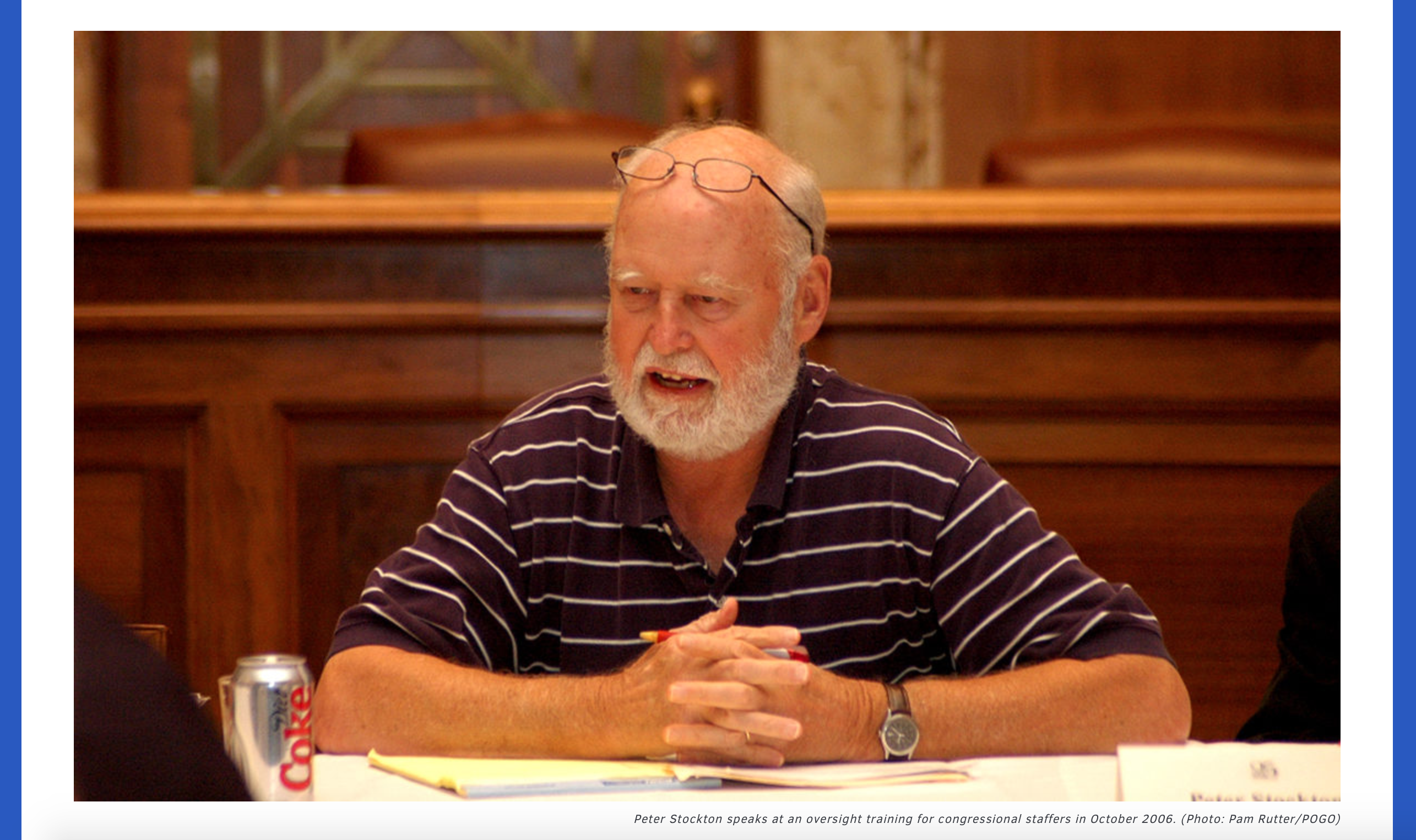
WRITTEN BY: KEITH RUTTER pogo.org
When it comes to mononymous people in government oversight, “Stockton!” was at the top of the list. But he also had a first name. Peter Stockton, age 80, passed away Sunday, September 8. He is survived by, as he would say, “6 1/2 children and 10 grandchildren.”
I knew Peter for about 30 years. Let’s be honest—Peter Stockton was an acquired taste. He was blunt and gruff. “Stockton!” was usually followed by an expletive in many corners of DC, even by his friends. But he was a true champion of the nation’s taxpayers, and we will be poorer for the loss.
For over 30 years Stockton worked in government attempting to expose corruption (22 years of which were as a staffer for Representative John Dingell). In the 1970s, he investigated most of the major defense contractors and oil companies, the diversion of bomb-grade uranium to Israel, and the death of Karen Silkwood. His investigation into the construction and operation of the Alaskan Pipeline spanned from the 1970s into the 1990s. In the 1980s and early 1990s, he probed the security and effectiveness of the nuclear weapons production program and defense contractor fraud.
Senate panel wants probe into nuclear weapon glitches
Panel is concerned that problems might reflect fundamental oversight shortcomings that have broader implications
September 18, 2019 | BY JOHN M. DONNELLY | rollcall.com
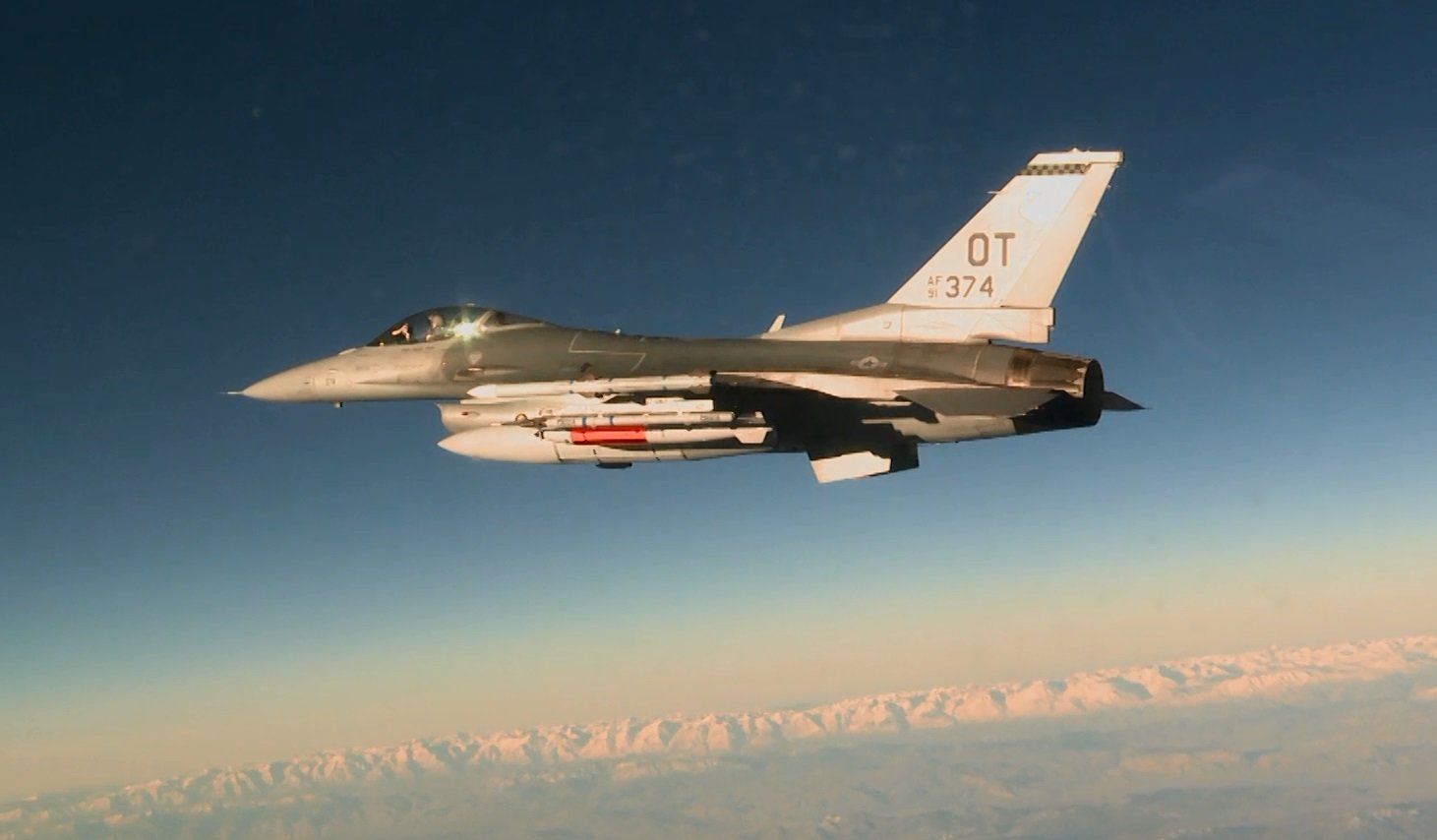
The Senate Appropriations Committee wants to order the Energy Department to launch an investigation into technical problems that have recently plagued U.S. nuclear weapons programs.
The committee’s mandate is buried deep inside the report accompanying the $48.9 billion Energy-Water spending bill (S 2470) for fiscal 2020 that the committee approved on Sept. 12.
Watchdogs Issue Second Demand to NNSA for Nation-Wide Environmental Review of Expanded Plutonium Pit Production
Public Interest Groups Challenge Plans to Fabricate Plutonium Pits for New, Unjustified Nuclear Weapons, at Los Alamos National Lab and Savannah River Site
COLUMBIA, SC, USA, September 17, 2019 /EINPresswire.com/
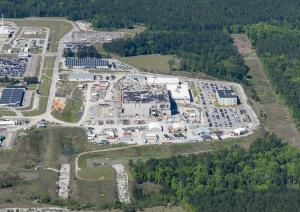
Today, lawyers for the Natural Resources Defense Council, Nuclear Watch New Mexico, Savannah River Site Watchand Tri-Valley Communities Against a Radioactive Environment sent a second letter to Department of Energy (DOE) Secretary Rick Perry and Lisa Gordon-Hagerty, the head of the semi-autonomous National Nuclear Security Administration (NNSA). The letter demands a nation-wide programmatic environmental impact statement (PEIS) for the agencies’ proposed expanded production of plutonium pits, the fissile cores or “triggers” of nuclear weapons.
Jay Coghlan, Nuclear Watch New Mexico director, noted, “The Los Alamos Lab has a long track record of nuclear safety problems that must be resolved before expanded plutonium pit production is even considered. The government’s claimed need for expanded production needs to be critically examined in a new nation-wide supplemental PEIS for its environmental impacts, costs and potentially adverse national security impacts. Following that, given the massive changes proposed for LANL due to expanded pit production, NNSA will also have to prepare a new site-specific site-wide environmental impact statement for the Los Alamos Lab.”
Pelosi Names Conferees to National Defense Authorization Act Conference
Washington, D.C. – Speaker Nancy Pelosi today named House Democrats to serve on a conference committee of the House and Senate versions of the FY 2020 National Defense Authorization Act (NDAA):
September 17, 2019 | Press Release Link: https://www.speaker.gov/newsroom/91719-1
“Democrats have always stood for a strong and smart national defense,” said Speaker Nancy Pelosi. “In July, House Democrats were proud to pass a responsible NDAA that keeps our nation safe while reducing wasteful spending, maintaining a tough stance on Russia, solidifying Congress’s oversight role over defense initiatives and advancing our bedrock American values. Our skilled Democratic Conferees will bring their expertise to ensure that the FY 2020 NDAA maintains key Democratic priorities, including a critical pay raise for our brave men and women in uniform, lifesaving support for veterans and military families and prohibiting any defense funds from being used to build the President’s wasteful, ineffective border wall. Guided by the leadership and vision of our Conferees, House Democrats will never waver from our responsibility to support those who serve and defend our country.”
September 17 War Hawk Down: A deep dive with into the firing of John Bolton, his record of failure, and how his core beliefs and worldview are deeply indicative of the way that Washington thinks about national security.
Special Guest: Trita Parsi. “In The Silo” explores at Chain Reaction, our annual fundraising gala. This year featured a tribute to Lew Butler, the founding Chair of the Board of Directors. News summary with Mary Kaszynski, Joe Cirincione, and Michelle Dover. Joe answers a question from Ben in Scotland.
Listen, Subscribe and Share on iTunes · Spotify · SoundCloud · YouTube · Google Play · Sticher
Also available on ploughshares.org/pressthebutton
A terrifying new animation shows how 1 ‘tactical’ nuclear weapon could trigger a US-Russia war that kills 34 million people in 5 hours
- A new simulation called “ Plan A,” by researchers at Princeton’s Program on Science and Global Security, shows how the use of one so-called tactical or low-yield nuclear weapon could lead to a terrifying worldwide conflict.
- In the roughly four-minute video, a Russian “nuclear warning shot” at a US-NATO coalition leads to a global nuclear war that leads to 91.5 million deaths and injuries.
- Under President Trump, the US is ramping up production of tactical nuclear weapons, ostensibly to target troops and munitions supplies. While advocates say these weapons would keep wars from escalating, the simulation finds the opposite outcome.
- The dissolution of the INF treaty in August raised the stakes for nuclear war, as both the US and Russia were free to develop weapons previously banned under the treaty.
- “The risk of nuclear war has increased dramatically in the past two years,” the project states. Nuclear strikes are an extremely remote possibility, but their chances are rising experts warn.
More than 91 million people in Russia, the US, and NATO-allied countries might be killed or injured within three hours following a single “nuclear warning shot,” according to a terrifying new simulation.
European Leadership Network Group Statement on Nuclear Arms Control
Ahead of the 74th session of the United Nations General Assembly, over 100 members of the European Leadership Network’s network of political, diplomatic and military figures call on leaders at UNGA to address rising nuclear risk, and renew commitments to international nuclear diplomacy and arms control.
The full statement and list of signatories is reproduced in English below, and is also available in French, German, Italian, and Russian. ************
As world leaders prepare to meet this month at the United Nations in New York, we call on them to take urgent steps to reduce the risks of nuclear confrontation. We join a growing number of international leaders in raising the alarm over new nuclear dangers.
Last month we witnessed the end of the landmark US-Russia Intermediate Nuclear Forces Treaty (INF). Today, there are grave doubts over the future of the only remaining agreement that limits and regulates Washington and Moscow’s strategic nuclear weapons, the New Strategic Arms Reduction Treaty (START). And new challenges confront the Comprehensive Nuclear-Test-Ban Treaty (CTBT).
Stability is eroding and risks are rising. North Korea has grown its nuclear weapon stockpile, tests missiles, and continues to feel threatened. The fate of inter-Korean and US-DPRK dialogue remains uncertain. Tensions are flaring between nuclear rivals India and Pakistan. And, following Washington’s unilateral breach and resumed sanctions, Iran may walk away from the nuclear deal that constrains its ability to develop nuclear weapons.
Moreover, new military technologies threaten to destabilise global and regional nuclear confrontations. These technologies are rapidly evolving and entirely uncontrolled.
The risks of nuclear accident, misjudgement or miscalculation have not been higher since the Cuban Missile Crisis. Complacency should not be an option. It is not only European security at stake.
The Catastrophic Tenure Of John Bolton
“The national security adviser’s principal responsibility has traditionally been to oversee a disciplined policymaking process that includes the State Department, the Pentagon and intelligence agencies, and to tee up big decisions for the president,” editorialized The Washington Post the night of Bolton’s firing, “Mr. Bolton didn’t do that.”
BY JOE CIRINCIONE | lobelog.com Sep. 11, 2019
Seventeen months ago, before Bolton became Donald Trump’s third national security advisor, the United States still had a deal that had stopped Iran’s nuclear program in its tracks. More, it had rolled it back to a fraction of its original size and boxed it into the most intrusive inspection regime ever negotiated. It was a deal for the ages. All of Trump’s military, intelligence and security advisors and our closest allies urged Trump to stay in the accord. Bolton destroyed it in two months, pushing Trump to violate it and impose draconian sanctions on Iran.
“Withdrawing from the Iran Nuclear Deal should be a top Donald Trump administration priority,” Bolton tweeted in July 2017, months before his appointment. “The declared policy of the United States should be the overthrow of the mullahs’ regime in Tehran,” he shouted at an MEK rally in July 2017, promising them that they would all celebrate in Tehran “before 2019.”
Today, Iran is slowly pealing away from the deal, too, taking baby steps towards restarting capabilities that someday could allow it to make the material for a bomb, should it decide to do so. No new deal. No better deal. No regime change. No celebration in Tehran. “Trump has spent years making a mess of Iran policy for no reason other than right wing politics and incompetence,” tweeted former Deputy National Security Advisor Ben Rhodes as news of Bolton’s sacking spread.
California lawmaker aims to stop closure of Diablo Canyon nuclear plant
Assemblyman Jordan Cunningham, R-Templeton (San Luis Obispo County), on Wednesday proposed a state constitutional amendment that would designate nuclear power as a source of renewable energy.
BY J.D. MORRIS | sfchronicle.com Sep. 4, 2019
Cunningham and two pro-nuclear organizations who support his amendment think its passage would make Diablo Canyon worth as much as $3.6 billion. A statement from Cunningham’s office said prolonging the life of Diablo Canyon would help the state fulfill its climate goals and “provide ratepayers with a cheap and constant source of energy for decades to come.”
But John Geesman, an attorney for the Alliance for Nuclear Responsibility, an anti-nuclear nonprofit, viewed the amendment as an attempt to prop up Diablo Canyon’s finances and said it had little chance of garnering the support it needs in the Legislature and electorate.
“That’s two mountains they’re probably incapable of climbing, realistically,” Geesman said. “The public just doesn’t want this stuff.”
PG&E spokeswoman Lynsey Paulo said the company would review the proposed amendment.
Trump fires John Bolton
Washington (CNN) President Donald Trump abruptly announced in a tweet Tuesday that he has asked national security adviser John Bolton to resign, noting that he “strongly disagreed with many” of Bolton’s suggestions “as did others in the administration.”
….I asked John for his resignation, which was given to me this morning. I thank John very much for his service. I will be naming a new National Security Advisor next week.
— Donald J. Trump (@realDonaldTrump) September 10, 2019
September 10 Hans Kristensen of the Federation of American Scientists joins Joe Cirincione to discuss Chinese and Russian nuclear modernization plans, and the state of nuclear arsenals around the world.
Leon Ratz joins Early Warning to discuss Iran’s latest announcement about its nuclear program, Russia’s plans to produce new weapons, and Congress’s return to Washington. Joe Cirincione and Michelle Dover answer a question from Gerrard on how citizens can influence their leaders to support nuclear weapons prohibition.
Listen, Subscribe and Share on iTunes · Spotify · SoundCloud · YouTube · Google Play · Sticher
Also available on ploughshares.org/pressthebutton
Radioactive Barges Are Killing the Vibe on This Russian Beach After Deadly Missile Blast
A pair of pontoon barges suspected of being doused in radioactivity during a deadly nuclear missile accident in Russia washed up on a local beach three weeks ago, where they’ve reportedly been leaking radiation into the sea and sand ever since.
BY GREG WALTERS | vice.com
They landed near the mouth of the Verkhovka river, and have been sitting there with no official warning signs beyond a dirty red shirt stretched between two wooden poles, according local Russian media.
Radiation measurements as high as eight times normal background levels were taken on Aug. 31 from a distance of 150 meters, while earlier tests soon after the pontoons arrived peaked as high as 38 times normal, the outlet said. Those levels are still well short of life-threatening, but measurements closer to the barges haven’t been made.
“No idiots could be found to check the levels on the pontoons themselves without protection,” the local TV presenter deadpanned during a broadcast Monday.
One of the two barges washed up at the mouth of the Verkhovka River a day after the explosion, on Aug. 9. The other was left there by tugboats four days later, Belomorkanal reported.
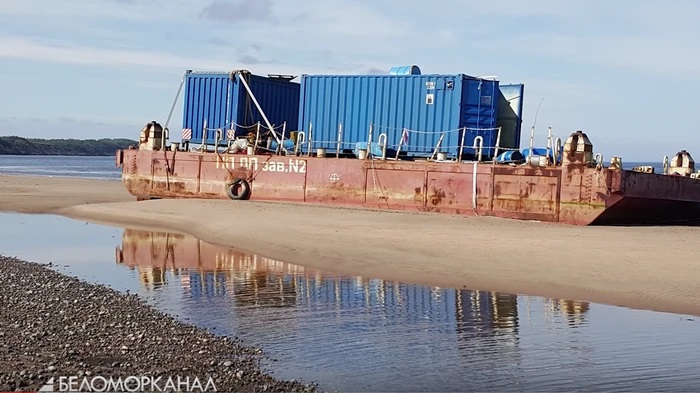
Readings taken on Saturday, Aug. 31 measured from 70 to 186 microroentgen per hour. Earlier measurements in August peaked at 750 microroentgen per hour. Normal local background levels in the area are closer to 20 microroentgen per hour, according to Greenpeace.
There’s not enough data yet to know what the levels are like on the barges themselves.

Nuclear Weapons Build-Up Insanity, Los Alamos Lab so-called “Clean-Up” – Jay Coghlan, Nukewatch NM – NH #428
Nuclear weapons – a reminder of what they look like and what they can do.
LISTEN HERE:
Nuclear weapons – their design, engineering, chances for implementation – that’s the topic we explore with Jay Coghlan, Executive Director of Nukewatch NM. Jay goes over the division of responsibility for nuclear weapons of mass destruction between Los Alamos National Laboratory(LANL), Sandia Laboratory, and California’s Lawrence Livermore Lab. He then rips into Department of Energy for the lies and “theatre” surrounding claims of a “more-than-halfway-completed” so-called “clean-up” of LANL that ignores the vast majority of radioactive contamination… and ultimately is funding the new nuclear arms race.
9 LANL waste containers denied shipment to WIPP
Barrels filled with transuranic waste fail inspection, remain at lab’s Plutonium Facility
BY TRIS DEROMA | lamonitor.com
DNSFB reports: https://www.dnfsb.gov/sites/default/files/document/18696/Los%20Alamos%20Week%20Ending%20July%2026%202019.pdf
Nine containers full of transuranic waste are stuck at the Los Alamos National Laboratory’s Plutonium Facility after the Carlsbad Waste Isolation Pilot Plant refused to take them in back in July.
The containers, which hold waste items such as gloves, tools and other items that have come into contact with radiological materials, were scheduled to be shipped to WIPP during the week of July 26.
The Department of Energy’s contractor N3B that operates WIPP inspected the drums at LANL prior to the shipping date and determined that the drums contained materials that could combust.
N3B Spokesman Todd Nelson said that there was never a chance the containers would have made it to WIPP in the condition they were in.
September 3 Barbara Slavin, Director of the Future of Iran Initiative at the Atlantic Council, joins Joe Cirincione to discuss increasing tensions in the Middle East and the effects of Trump administration’s ‘maximum pressure’ campaign toward Iran.
Michelle Dover hosts Early Warning with Joe Cirincione and Tom Collina on the anniversary of the USSR’s first nuclear test. Michelle Dover and Joe Cirincione answer a question from Patrick about who in the US government is taking current nuclear weapons risks seriously.
Listen, Subscribe and Share on iTunes · Spotify · SoundCloud · YouTube · Google Play · Sticher
Also available on ploughshares.org/pressthebutton
Younger retiring as director of Sandia Labs
Sandia National Laboratories Director Steve Younger is retiring after two years on the job.
BY SCOTT TURNER / JOURNAL STAFF WRITER | abqjournal.com August 27, 2019
Copyright © 2019 Albuquerque JournalYounger told employees at the labs in an email Monday, saying he informed the National Technology and Engineering Solutions Board of Managers of his intent to retire on Dec. 31.
“The Board is actively engaged in a systematic search for my successor,” he said in the email.
Younger, 67, took the helm at Sandia on May 1, 2017, as the lab changed management for only the second time in its history. Younger has led the management entity NTESS of Sandia, a wholly owned subsidiary of Honeywell International, which took over from Lockheed Martin.
“Since arriving at the laboratories, I have been truly impressed with the impact that you have on the security of our nation and the world,” Younger told employees.
Younger said his role as a nuclear weapons researcher has made him keenly aware of the need to understand conflict avoidance.
The New Nuclear Arms Race Is Here. And Russia’s Already Paying the Price.
Meet 4 new nuclear weapons systems the Kremlin is testing — right now.
BY GREG WALTERS | vice.com
Russian President Vladimir Putin, right, listens to President of National Research Center “Kurchatov Institute” Mikhail Kovalchuk, as he visits Kurchatov Institute of Atomic Energy, the home of the Soviet nuclear weapons program and later Soviet and Russian non-military nuclear technologies in Moscow, Russia, Tuesday, April 10, 2018. (Alexei Nikolsky, Sputnik, Kremlin Pool Photo via AP)At the funeral for 14 Russian sailors, Captain Sergei Pavlov hailed the “blameless heroes” for dousing the fire that broke out on their nuclear spy submarine, called the Losharik, during a secret mission last month.
“At the cost of their lives,” Pavlov said, “they prevented a catastrophe on a planetary scale.”
But as Russia tests and deploys an array of exotic new nuclear weapons, fears are mounting that the next nuclear mishap may not be so easily contained.
This summer alone, Russia has suffered some two-dozen casualties in accidents related to exotic nuclear hardware, including the mysterious explosion linked to the Skyfall missile program that killed seven and sent local radiation levels spiking in a nearby city.
The deadly incidents are stoking fears of a return to Cold War-style runaway nuclear arms development, accompanied by dangerous accidents and Soviet-style cover-ups.
“We need to acknowledge that the Russians are engaged in wacky programs,” said Aaron Stein, a nuclear nonproliferation expert at the Foreign Policy Research Institute. “It’s indicative of an arms complex that has been cut loose to pursue exotic, silly projects. And it’s dangerous.”
You can blame the renewed U.S.-Russian arms race, which nuclear experts warn is driving Russia to recklessly experiment with “absurd” new ideas.
On 29 August, the International Day against Nuclear Tests, Kazakhstan deposited its instrument of ratification for the Treaty on the Prohibition of Nuclear Weapons, becoming the 26th state party.
From 1949 to 1989, an estimated 456 Soviet nuclear tests — including 116 atmospheric tests — were carried out at the Semipalatinsk test site in Kazakhstan, with devastating long-term consequences for human health and the environment.
Upon the break-up of the Soviet Union, Kazakhstan inherited approximately 1,400 nuclear warheads, which it subsequently gave up — recognizing that its security was best achieved through disarmament.
The date of 29 August 2019 has special significance for Kazakhstan. It marks 70 years since the first Soviet nuclear test at the Semipalatinsk site and 28 years since the formal closure of that site.
We congratulate Kazakhstan on its ratification and we acknowledge the persistent efforts of Alimzhan Akhmetov, of the Center for International Security and Policy in Kazakhstan, to encourage the Kazakh government to take this important step.
Pakistan ups nuclear rhetoric, carries out launch of ballistic missile
BY AJAY BANERJEE | tribuneindia.com Tribune News Service New Delhi August 29, 2019
Pakistan has successfully test-fired surface-to-surface ballistic missile ‘Ghaznavi’, capable of delivering multiple warheads up to 290 km, the Army said on Thursday, amid fresh Indo-Pak tensions after India revoked Jammu and Kashmir’s special status.
Pakistan on Wednesday closed three aviation routes of the Karachi airspace till August 31, which had promoted speculation about the possible missile-testing.
Pakistan successfully carried out night training launch of surface to surface ballistic missile Ghaznavi, capable of delivering multiple types of warheads upto 290 KMs. CJCSC & Services Chiefs congrat team. President & PM conveyed appreciation to team & congrats to the nation. pic.twitter.com/hmoUKRPWev
— DG ISPR (@OfficialDGISPR) August 29, 2019
With this, Pakistan upped its ‘nuclear rhetoric’. The Director General of Inter Service Public Relations (DG-ISPR) said Pakistan on Wednesday night tested a short range nuclear missile in Sindh.
France Is Still Cleaning Up Marie Curie’s Nuclear Waste
Her lab outside Paris, dubbed Chernobyl on the Seine, is still radioactive nearly a century after her death.
BY TARA PATEL | bloomberg.com
Marie Curie working at the Radium Institute, a radioactivity laboratory created for her by the Pasteur Institute and the University of Paris at the University of Paris, 1925. PHOTOGRAPHER: SCIENCE SOURCEIn 1933 nuclear physicist Marie Curie had outgrown her lab in the Latin Quarter in central Paris. To give her the space needed for the messy task of extracting radioactive elements such as radium from truckloads of ore, the University of Paris built a research center in Arcueil, a village south of the city. Today it’s grown into a crowded working-class suburb. And the dilapidated lab, set in an overgrown garden near a 17th century aqueduct, is sometimes called Chernobyl on the Seine.
No major accidents occurred at the lab, which closed in 1978. But it’s brimming with radioactivity that will be a health threat for millennia, and France’s nuclear watchdog has barred access to anyone not wearing protective clothing. The lab is surrounded by a concrete wall topped by barbed wire and surveillance cameras. Monitors constantly assess radiation, and local officials regularly test the river.
“We’re proof that France has a serious nuclear waste problem,” says Arcueil Mayor Christian Métairie. “Our situation raises questions about whether the country is really equipped to handle it.”
Nuclear power accounts for almost three-fourths of France’s electricity, vs. a fifth in the U.S. There’s no lasting solution for the most dangerous refuse from the country’s 906 nuclear waste sites, including some of what’s in Arcueil.
Women’s Equality Day 2019: Diversity Encourages Innovation

nuclear diplomacy needs more women
“Negotiating successfully requires having the best people, regardless of gender, and recognizing that diversity enhances innovation.”
The story of women in nuclear security reflects many of the broader lessons we’ve learned about gender and politics: that women’s contributions have often been ignored or excluded, risking policies that lack key perspectives, nuance and debate. With today’s high stakes, we need national security policy that includes all of the best ideas. New and lasting solutions require diversity of representation and experience if we’re to solve the issues surrounding humanity’s survival.
https://www.washingtonpost.com/outlook/2019/05/23/why-nuclear-diplomacy-needs-more-women/
Arms Control Association: #ThisWeek in Nuclear History: The Soviet Union detonated its first nuclear weapon on August 29, 1949 at Semipalatinsk in the Soviet republic of Kazakhstan. Tests continued at the site until 1989 with little regard for their effect on the local people or environment. After the Soviet Union’s collapse in 1991, tests ended at the site and it was officially closed on Aug 29, 1991. The International Day against Nuclear Tests is now observed annually on August 29.
Trump Wanted to Nuke Hurricanes to Stop Them From Hitting U.S. Coast: Report
“I got it. I got it. Why don’t we nuke them?” [Trump said] according to one source who was there.
It makes sense that the president doesn’t like heavy winds. Photo: AFP Contributor/AFP/Getty ImagesBY MATT STIEB | nymag.com August 26, 2019
The president’s understanding of the natural world isn’t particularly deep. He thinks that the noise from wind turbines causes cancer. He’s called climate change a hoax and thinks that cold weather in the winter disproves global warming. He might not get how rivers work, and he definitely doesn’t understand how to stop a forest fire: Last year, he suggested a proper raking could have stalled the disastrous Camp Fire, which killed 83 Californians.
How Congress Can Prevent a Meltdown of Global Nuclear Arms Control
The end of the INF Treaty was a mistake but building new low-yield nukes and leaving New START would be disastrous.
BY TOM COUNTRYMAN & LAURA KENNEDY | nationalinterest.org
Image: ReutersThe Trump administration’s nuclear weapons policy has eroded decades of agreed-upon norms. An important arms control agreement with Russia was already shredded, and another is on the brink of being abandoned. Instead of adhering to its commitments under the Nuclear Non-Proliferation Treaty (NPT), which calls for good-faith steps towards the ultimate goal of nuclear disarmament, the Trump administration’s Nuclear Posture Review (NPR) released last year called for, among other things, new “low-yield” nuclear weapons that are considered likely to lower the nuclear threshold. Fortunately, Congress now has an opportunity to push back on these damaging departures from long-standing policies that have so far prevented nuclear annihilation.
House and Senate negotiators will soon meet to begin reconciling major differences in their versions of the Fiscal Year 2020 National Defense Authorization Act (NDAA). Among the many issues that must be addressed, that of nuclear weapons is poised to be one of the most controversial.
August 27 Lynn Rusten of the Nuclear Threat Initiative (NTI), sits down with Joe Cirincione to discuss the history of arms control between the United States and Russia, and how the Trump administration’s actions have put the New START treaty in danger.
Michelle Dover hosts Early Warning with Roger L. Hale Fellow Catherine Killough and Matt Korda, Research Associate at the Federation of American Scientists. Also, Michelle Dover and Joe Cirincione answer a question from Henry about US-North Korea relations.
Listen, Subscribe and Share on iTunes · Spotify · SoundCloud · YouTube · Google Play · Sticher
Also available on ploughshares.org/pressthebutton
Total eclipse: Nuclear power regulation slips deeper into the shadows
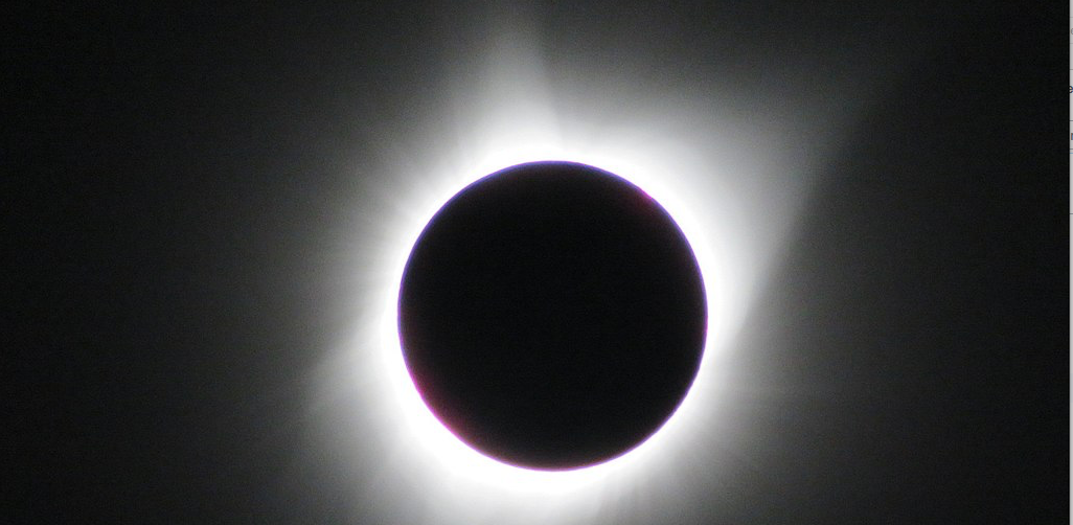
BY PAUL GUNTER | beyondnuclearinternational.org
On July 17, 2019, the United States Nuclear Regulatory Commission (NRC) held its regularly scheduled information exchange meeting with the nuclear industry’s Institute for Nuclear Power Operations (INPO) at NRC Headquarters in Rockville, Maryland.
INPO is a secretive industry task force headquartered in Atlanta, Georgia, led by the nation’s senior nuclear utility executives. Industry watchdogs often refer to INPO as “the shadow regulator” of the U.S. atomic power industry.
It is significant that NRC management chose this brief hour-long meeting in July with INPO to make a public announcement that the nation’s federal regulatory agency is proposing to dramatically cut back its “Regulatory Oversight Process” in what is being called a “transformative process.”
The Waste that Remains
Los Alamos Labs hit with $222,313 fine for safety violations. Meanwhile, clean-up of legacy sites may permanently seal waste in the ground.
BY LEAH CANTOR | sfreporter.com
Workers excavating a waste disposal site | US Department of EnergyEven as Los Alamos National Labs takes on contracts for new weapons manufacturing, taxpayers are still shelling out for the clean-up costs of contamination dating back to atomic bomb testing. The latest clean-up proposals will likely leave hazardous waste in the ground. Meanwhile, recent hazardous waste safety violations add up to $222,313.
N3B, the company recently contracted by the US Department of Energy to complete a significant portion of remaining clean-up efforts, gave a presentation to the public at the Santa Fe Community College on Thursday as part of a series of community meetings leading up to the process to decide methods for cleaning up several contaminated legacy waste sites around LANL.
…The DOE reported that 1,168 of 2,123 contaminated sites have been cleaned and 10,000 cubic meters of radioactive waste removed, leaving 5,000 cubic meters of waste remaining identified for clean-up. Yet, according to watchdog group Nuke Watch New Mexico, that leaves 690,251 cubic meters of waste permanently buried on-sight in unlined pits and shafts above a regional aquifer that provides drinking water for San Ildefonso Pueblo, Española, Los Alamos and Santa Fe, among other communities. Nuke Watch Executive Director Jay Coghlan tells SFR this number is from analysis of publicly available LANL documents and data.
Russian Nuclear Blast Theories Hint at No-Holds-Barred Arms Race
Amid the mysteries surrounding a deadly blast at a Russian military facility that killed at least five researchers and caused a brief radiation spike, one thing is clear: the new arms race is going full speed.
BY JAKE RUDNITSKY & ILYA ARKHIPOV | bloomberg.com
Burevestnik/SSC-X-9 Skyfall missile. Source: Russian Ministry of DefenceThe Aug. 8 explosion at a remote testing facility in the White Sea has remained a tightly guarded secret by the military, with Russian radiation-monitoring stations suddenly failing to send their data to international agencies in the days that followed. President Vladimir Putin would say only that the accident involved “work on promising weapons systems” that Russia is developing in response to “what our partners, including the Americans, are testing.”
President Donald Trump was more forthcoming in a tweet on the mishap, saying it involved a new nuclear-powered cruise missile known in the West as “Skyfall” but adding that the U.S. version is better. Putin’s spokesman insisted Russia’s is superior.
New Mexico has enough nuclear waste
We cannot not let the U.S. Department of Energy and the out-of-state nuclear waste generators turn New Mexico into the nuclear waste capital of the United States.
BY GEORGE ANASTAS & LOKESH CHATURVEDI | santafenewmexican.com
Nuclear waste sites in New Mexico are prolific. The Department of Energy and the nuclear industrial waste complex want to further thrust the nuclear waste sword into the heart of New Mexico.
Congratulations to Gov. Michelle Lujan Grisham for standing up for New Mexico. It is time for all New Mexicans to raise their voices and say, “Enough is enough.”
Read on to learn about the many nuclear waste sites in New Mexico:
Pakistan Leader Vents Frustration at India: ‘No Point in Talking to Them’
“My worry is that this [the crisis in Kashmir] can escalate and for two nuclear-armed countries, it should be alarming for the world what we are facing now.” — Prime Minister Imran Khan of Pakistan
BY SALMON MASOOD & MARIA ABI-HABIB | nytimes.com
Prime Minister Imran Khan of Pakistan said he warned President Trump of a “potentially very explosive situation.” Credit: Saiyna Bashir for The New York TimesISLAMABAD, Pakistan — Prime Minister Imran Khan of Pakistan intensified his criticism of India on Wednesday over its Kashmir crackdown, saying he would no longer seek dialogue with Indian officials and raising the threat of a military escalation between the nuclear-armed neighbors.
In an interview with The New York Times, Mr. Khan complained bitterly about what he described as repeated rebuffs from Prime Minister Narendra Modi of India at his entreaties for communication, both before and after the Aug. 5 crackdown on the disputed territory of Kashmir.
“There is no point in talking to them. I mean, I have done all the talking. Unfortunately, now when I look back, all the overtures that I was making for peace and dialogue, I think they took it for appeasement,” Mr. Khan said during the interview, at the prime minister’s office in Islamabad. “There is nothing more that we can do.”
U.S. tests first intermediate-range missile since withdrawing from treaty with Russia
“This is a very clear sign that the United States and Russia are on the verge of a new missile race,” — Daryl Kimball, executive director of the Arms Control Association.
BY MISSY RYAN | washingtonpost.com
A cruise missile launches off the coast of California on Aug. 18. (Scott Howe/Department of Defense/AP)The U.S. military has conducted a test launch of an intermediate-range cruise missile for the first time since withdrawing from a Cold War-era arms-control pact with Russia earlier this month, the Pentagon said Monday.
The conventional missile, which was fired from a mobile ground launcher and flew more than 500 kilometers (310 miles) before hitting its target, launched off the coast of California on Sunday afternoon, the Pentagon said in a statement.
“Data collected and lessons learned from this test will inform the Department of Defense’s development of future intermediate-range capabilities,” the statement said.
The test follows the Trump administration’s formal withdrawal Aug. 2 from the Intermediate-Range Nuclear Forces Treaty (INF), a 1987 agreement that banned Washington and Moscow from testing, producing or deploying missiles with ranges from 500 to 5,500 kilometers (310 to 3,400 miles).
More nuclear weapons — less cleanup
At recent public forums, the Department of Energy and the Los Alamos National Laboratory claimed that cleanup is more than half complete.
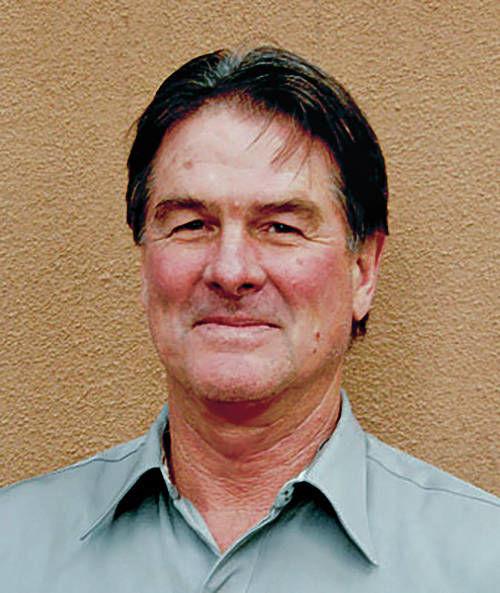
BY JAY COGHLAN | santafenewmexican.com
What these staged events fail to disclose, contradicting repeated claims of transparency, is that decisions already have been made behind closed doors to remove only approximately 6,500 cubic yards of radioactive and toxic waste, while leaving 30 times as much buried permanently above our groundwater aquifer.
LANL used to claim that groundwater contamination from lab operations was impossible. Today, we sadly know otherwise. Deep groundwater under LANL is contaminated with chromium, perchlorate and high explosives. Intermediate aquifers linked to deep groundwater are contaminated with tritium, industrial solvents, heavy metals and plutonium.
August 20 William Hartung, director of the Arms and Security Project at the Center for International Policy, sits down with Joe Cirincione to discuss the corporate connection to US arms sales abroad, and whether or not companies manufacturing weapons of war should bear responsibility for the casualties incurred as a result of their use.
Joe Cirincione hosts Early Warning with Ploughshares Fund Deputy Director of Policy Mary Kaszynski and Jessica Lee, Senior Director at Council of Korean Americans. Also, Michelle Dover and Joe Cirincione answer a question from Melissa about the differences in US policy toward Iran and North Korea.
U.S. Arms Sales to Saudi Arabia: The Corporate Connection, William Hartung’s new report: static.wixstatic.com/ugd/fb6c59_7fa…0227cc59fb.pdf
Listen, Subscribe and Share on iTunes · Spotify · SoundCloud · YouTube · Google Play · Sticher
Also available on ploughshares.org/pressthebutton
August 20 William Hartung, director of the Arms and Security Project at the Center for International Policy, sits down with Joe Cirincione to discuss the corporate connection to US arms sales abroad, and whether or not companies manufacturing weapons of war should bear responsibility for the casualties incurred as a result of their use.
Joe Cirincione hosts Early Warning with Ploughshares Fund Deputy Director of Policy Mary Kaszynski and Jessica Lee, Senior Director at Council of Korean Americans. Also, Michelle Dover and Joe Cirincione answer a question from Melissa about the differences in US policy toward Iran and North Korea.
U.S. Arms Sales to Saudi Arabia: The Corporate Connection, William Hartung’s new report: static.wixstatic.com/ugd/fb6c59_7fa…0227cc59fb.pdf
Listen, Subscribe and Share on iTunes · Spotify · SoundCloud · YouTube · Google Play · Sticher
Also available on ploughshares.org/pressthebutton
IPPNW warns of dire consequences of military escalation in Kashmir
 International Physicians for the Prevention of Nuclear War (IPPNW) is calling on the Indian government to restore immediately all communications and freedom of movement in Kashmir and Jammu, and urging all states in the disputed border regions to initiate new diplomatic talks aimed at reducing tensions and negotiating a peaceful settlement to the long-standing conflict.
International Physicians for the Prevention of Nuclear War (IPPNW) is calling on the Indian government to restore immediately all communications and freedom of movement in Kashmir and Jammu, and urging all states in the disputed border regions to initiate new diplomatic talks aimed at reducing tensions and negotiating a peaceful settlement to the long-standing conflict.
IPPNW is deeply concerned that deteriorating humanitarian and political conditions in Kashmir, after the Indian government put the area in lockdown earlier this month, are increasing significantly the risk of military escalation between nuclear-armed India and Pakistan. Three of the four wars fought between India and Pakistan have started in Kashmir.
The nuclear arms race is back … and ever more dangerous now
Donald Trump has increased spending on America’s arsenal while ripping up cold war treaties. Russia and China are following suit.
BY SIMON TISDALL | theguardian.com
A missile test launch by North Korea on 25 July this year. Photograph: APImagine the uproar if the entire populations of York, Portsmouth or Swindon were suddenly exposed to three times the permissible level of penetrating gamma radiation, or what the nuclear physicist Ernest Rutherford termed gamma rays. The outpouring of rage and fear would be heard across the world.
That’s what happened to the roughly 200,000 people who live in the similarly sized northern Russian city of Severodvinsk on 8 August, after an explosion at a nearby top-secret missile testing range. Russia’s weather service, Rosgidromet, recorded radiation levels up to 16 times higher than the usual ambient rate.
Yet the incident has been met with surly silence by Russia. It was five days before officials confirmed a blast at the Nyonoksa range had killed several people, including nuclear scientists. No apologies were offered to Severodvinsk residents. There is still little reliable information. “Accidents, unfortunately, happen,” a Kremlin spokesman said. That callous insouciance is not universally shared. According to western experts, the explosion was caused by the launch failure of a new nuclear-powered cruise missile, one of many advanced weapons being developed by Russia, the US and China in an accelerating global nuclear arms race.
Nuclear News Archives – 2021
Nothing Found
It seems we can’t find what you’re looking for. Perhaps searching can help.

